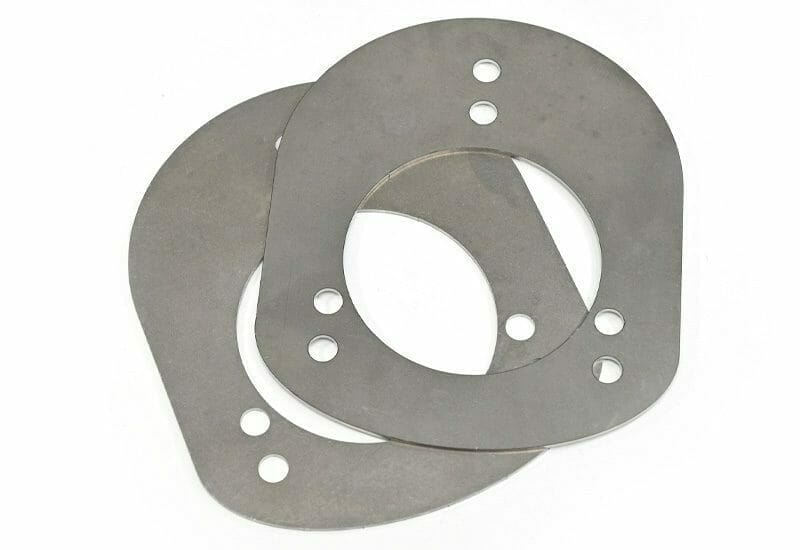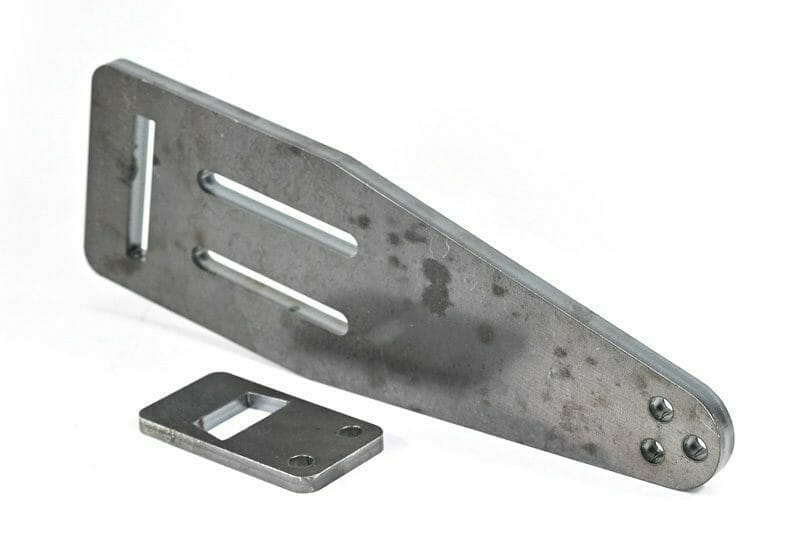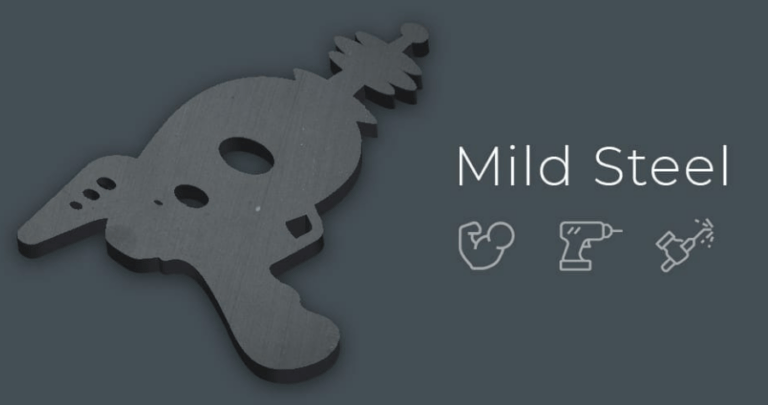Mild steel is a versatile, affordable option for laser cutting projects. Here’s what you need to know about this common material, including its strengths, weaknesses, and best applications.
What is mild steel?
Mild steel is a carbon steel that’s made by heating iron and carbon together. Mild steel is known for having a lower amount or carbon, typically between 0.05% to 0.25% by weight. As a result of its low carbon and lack of additional elements besides iron, mild steel has excellent strength, is weldable and machinable while still being affordable compared to other types of metals.
To make mild steel, iron ore and coal are melted together in a blast furnace. Any impurities are burned off, and the chemical composition is adjusted. The molten mixture is then allowed to solidify into a rectangular shape, which is then brought down to the desired size using hot rolling or cold drawing processes.
Why use mild steel in your laser cutting project?
Mild steel is a great choice for laser cutting projects. It’s a versatile material that can be used in construction, manufacturing and transportation. In the automotive industry, mild steel is used to make parts like axles and frames. It’s also commonly used by fabricators, welders, machinists, prototypers and anyone else who needs a strong, reliable part that’s easy to work with!
- Affordable, strong, weldable and machinable.
- Easy to cut with lasers: it’s relatively soft so it doesn’t require a lot of power and therefore doesn’t cost as much.
- Several add-on services are available on mild steel including bending, countersinking, plating, powder coating, and tapping.
Cutting Mild Steel
At SendCutSend, we cut mild steel up to ½” thick using one of our fiber lasers. We use high powered lasers ranging from 4kw to 12kW that make highly accurate cuts with tight tolerances within +/- .005″ or better.
We compensate for all kerf and line offsets in your design. Our fiber laser beam diameter varies between roughly 0.006″ and 0.010” depending on the material being cut, but you do not need to make any adjustments to your design to compensate for the kerf in the laser cutter.
We offer you A36 and 1008 carbon steel in three surface finishes based on the most popular thicknesses: cold rolled, hot rolled, and hot rolled pickled and oiled.
Cold-Rolled Steel (1008)

Cold rolled carbon steel is one of the most popular steel types for laser cutting. It’s used in structural parts, as well as parts that are subjected to high stresses and must be able to withstand wear and tear. This type of steel is easy to machine due to its finer grain structure, which results in cleaner edge, better surface quality and more exact dimensions. Cold-rolled steel also has exceptional refinement and tends to be a little stronger and harder than hot-rolled carbon steels.
Cold rolled carbon steel has excellent bending properties so is a great choice for your fabrication projects that will also require our sheet metal bending services.
Hot-Rolled Steel (A36)

Hot-rolled carbon steel has a higher carbon content than hot-rolled pickled and oiled. It’s also more rigid and resistant to corrosion, but less prone to warping. Hot-rolled offers good weldability and machinability, with a scaled surface finish from the cooling process that makes it free of internal stresses sometimes associated with further processing.
Hot-rolled steel can be used in bending but is more prone to cracking because it’s softer than other types of metal sheets like stainless steel or aluminum alloys.
Hot-rolled pickled and oiled (A36)

Hot-rolled pickled and oiled steel is the highest strength mild steel available. It can be used for many types of laser cutting projects and is also suitable for metalworking projects such as fabricating parts, welding, forming and bending.
Hot-rolled pickld and oiled has a bright, shiny finish that makes it easy to finish with no further treatment required (like painting). Compared to cheaper “mill finished hot-roll” that most steel centers sell, hot-rolled pickled and oiled has a much smoother surface which means less grinding or sanding before painting or plating your part!
Mild Steel Strengths
Affordability
Compared to other types of steel, mild steels are generally more affordable. If you’re working with budget restraints or simply looking for a more affordable material, this type of steel can help keep your project costs low.
Malleability
Mild steel’s composition makes it more ductile. It can be stretched, bent, cut and twisted without breaking. If you’re needing flexibility in your project, this steel is easy to make into your desired shape.
Weldability
Mild steel’s low carbon content and heat distortion capabilities make it great metal for welding. Whether you’re choosing MIG welding or Arc welding, this type of metals offer excellent weldability.
Mild Steel Weaknesses
Low Hardness
Mild steel is relatively soft compared to other types of steel. This makes it less suitable for applications that require high strength or durability, such as structural or load-bearing applications.
Brittle fracture
Mild steel has a relatively low carbon content, which can make it prone to brittle fracture when subjected to sudden or high impact loads. This weakness can be improved through heat treatment processes, such as quenching and tempering.
Corrosion
In its untreated form, mild steel does not resist corrosion as well as other types of steel. You can increase the corrosion resistance by adding the finishing services such as plating or powder coating to your laser cut parts.
Poor wear resistance
Mild steel is not particularly wear-resistant and can be easily worn down by abrasive materials or surfaces. This can make it unsuitable for applications where wear resistance is a critical factor.
Common uses for mild steel in laser cutting
Mild steel is commonly used in industrial settings to make structural parts (non load-bearing), mechanical parts and other items that require strength and durability. This type of steel is also used for parts that need to be painted or plated because it has a uniform thickness throughout its composition; this means there’s no risk of chipping off during painting or plating operations.
Mild steel is also ideal for heat treating processes such as tempering (hardening) or normalizing (softening). These processes involve heating up the piece until it reaches its melting point before quenching it in water or oil so that only certain areas get hot enough while others remain cool enough not to lose their shape when cooled down again.
Among our customers, we see mild steel being using for the following:
- Structural steel
- Furniture
- Decorations
- Signs
- Wire
- Nails
- Automotive
- Fencing
Mild steel is an affordable and versatile choice for laser cutting projects.
We hope you’ve enjoyed learning more about the many uses and benefits of mild steel. This material is perfect for laser cutting projects, but it’s also used in many other industries including construction, automotive manufacturing and aerospace engineering. If you’re ready to get started with laser cutting mild steel, check out our design guidelines.
SendCutSend provides low cost laser cutting services across the US. If you’re looking for laser cutting near me consider our online laser cutting services which provide fast turn-arounds and parts to your door in just a few days. If you have any questions feel free to explore our instant pricing tool and contact us.





